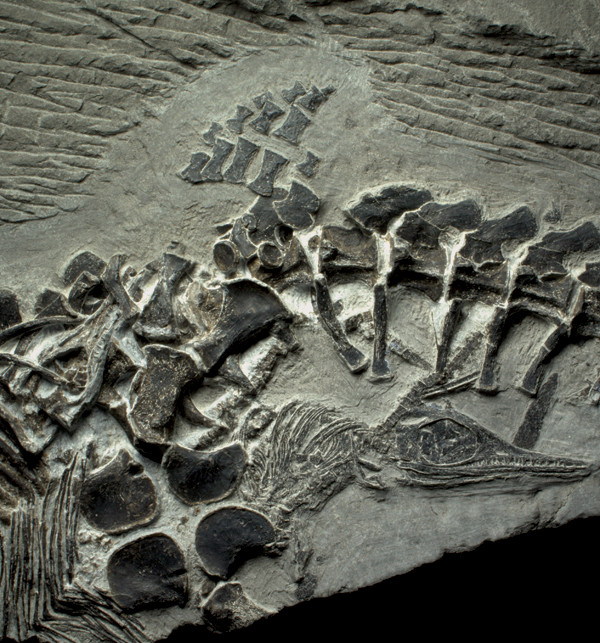
by Timothy Oleson Monday, June 23, 2014

A young Chaohusaurus, a marine reptile that lived about 248 million years ago, is seen emerging headfirst from its mother in this portion of a remarkably preserved fossil. The head of a second juvenile, still inside the mother, is also visible to the left. Credit: ©Ryosuke Motani, CC-BY 3.0 US.
Not only does the fossil specimen preserve an example of live birth, or viviparity, in action, but the embryos are about 10 million years older than previously preserved embryos of Mesozoic marine reptiles, reported Ryosuke Motani of the University of California at Davis and his colleagues in PLOS ONE. Additionally, the headfirst birth posture — characteristic of births in most viviparous terrestrial animals — suggests that marine reptiles, which are known to have evolved from terrestrial reptiles, inherited viviparity from these land-dwelling ancestors, the researchers wrote. This contrasts with the conventional view that live birth evolved in marine reptiles as an adaptation to life in the sea, and further suggests that terrestrial reptiles evolved the trait much earlier than previously thought, they noted.
© 2008-2021. All rights reserved. Any copying, redistribution or retransmission of any of the contents of this service without the expressed written permission of the American Geosciences Institute is expressly prohibited. Click here for all copyright requests.